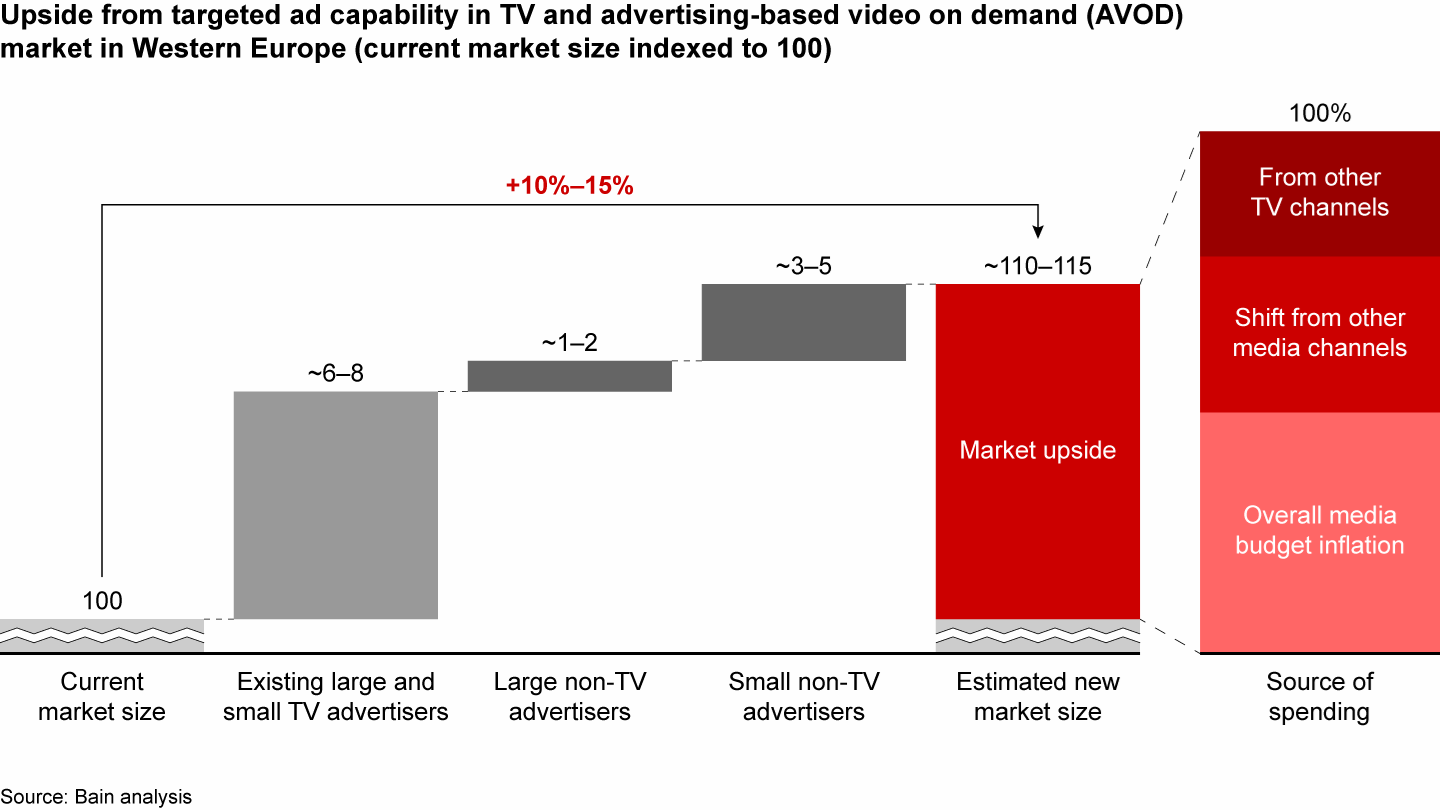Brief

The TV advertising revolution started with several sparks. More consumers are cutting the cord in favor of video on demand. Linear audiences are aging. Digital video platforms, like YouTube, are gaining substantial market share by expanding beyond mobile devices into consumers’ living rooms. Some services are adopting hybrid models, with tiers that range from ad-supported to ad-free offerings. Even streaming titan Netflix, under the pressures of heightened competition among platforms and inflation, is no longer saying “never” to the possibility of introducing advertising.
As a result, TV broadcasting is now a full-fledged burning platform. These relatively new players are chipping away at broadcasters’ competitive advantage in premium, long-form content. Having already cannibalized advertising revenues from print media, digital natives are shifting the battleground to a TV ad market suffering from declines in linear viewership. To fight back, TV broadcasters will need to take the plunge into digital with their linear businesses—or watch the flames rise.
The terminology used to describe the future state of TV, from “advanced advertising” to “addressable TV” to “connected TV,” remains broad and ambiguous across markets and players. But one thing is clear: Bringing digital marketing techniques to linear TV advertising will allow broadcasters to survive and thrive through the next era of television.
Following in the footsteps of tech giants like Facebook, Google, and YouTube, broadcasters can enable targeting and measure engagement on linear ads. They can deliver more tangible value for advertisers in the form of measurable business outcomes along the marketing funnel, from awareness to conversion. Digitalization will also grant broadcasters access to smaller advertisers through more competitive costs per impression, lower spend tickets, and a more automated or self-service buying journey.
A handful of broadcasters have started down this path with increased investments in measuring audience habits across linear and digital TV. But few have cracked the code on addressability and conversion tracking along the full marketing funnel.
There is good news: Broadcasters already have some of the essential building blocks to succeed. By leaning into their strengths, including their trusted brands, broad reach, and deep relationships with media agencies, they can become formidable competitors once again.
And there’s never been a better time for broadcasters to digitize their inventory: Amid the Covid-19 rebound and mounting inflation, media budgets are swelling. Many advertisers are dynamically reallocating their spending, giving leading TV broadcasters a chance to swoop in and grab share from digital channels—effectively eroding the competitive advantage that tech giants have built up over the past decade. This will be even more critical as Netflix and Disney+ look into launching ads, intensifying the fight for advertisers’ business and posing a greater threat to broadcasters’ survival.
By making the shift to digital now, TV broadcasters can go beyond offsetting the decline in linear TV advertising revenues. For instance, Western European broadcasters could capture around 10% to 15% upside from growth in the converged TV and advertising-based video on demand (AVOD) market (see Figure 1).
Broadcasters could capture around 10% to 15% of the TV ad market through digitalization


We expect existing TV advertisers to account for the largest share of upside potential. They are more likely to be enticed by offerings of better targeting and outcome-based measurement. They also place a high value on premium content and brand safety, areas where traditional broadcasters can excel.
The vibrant market of small- and medium-sized enterprises that aren’t currently advertising on TV will remain harder to reach. Global tech players are already meeting most of their needs. But broadcasters with the most advanced buying and planning automation, targeting, and measurement capabilities have a shot at capturing share in this space, if they move quickly.
To unlock their full potential with digital advertising, TV broadcasters can take three actions:
- Lead industry initiatives on cross-channel measurement. Pioneering companies will work fast and decisively to ensure that industrywide tracking standards—across metrics like audience reach and dwell time—take advantage of the benefits of each platform.
- Invest in supporting capabilities. Leading broadcasters will build in-house capabilities and forge partnerships to support their digital goals with the right technology, people, and data. Identity management, contextual targeting, and shoppable content are among the many new capabilities they will need to master, either on their own or through extensive ecosystem partnerships.
- Engage with clients and media agencies. Buyers and sellers can make the most of the current opportunity by collaboratively creating value and sharing it.
The window of opportunity is limited, and traditional broadcasters will need to move with urgency. But early adopters can see significant gains, as digitizing linear advertising quickly becomes not just a source of differentiation, but a requirement for survival.